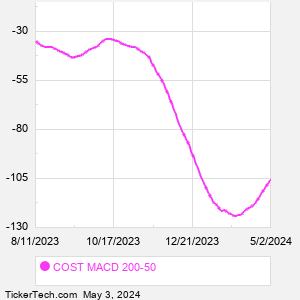Noah Holdings (NOAH) Shares Cross Above 200 DMA
1 hour, 43 minutes ago
Shares of SHM Now Oversold
1 hour, 44 minutes ago
Notable Two Hundred Day Moving Average Cross - CNC
1 hour, 44 minutes ago
TS Makes Notable Cross Below Critical Moving Average
1 hour, 44 minutes ago
PAG Crosses Above Key Moving Average Level
1 hour, 45 minutes ago
Adtalem Global Education Breaks Above 200-Day Moving Average - Bullish for ATGE
1 hour, 45 minutes ago
NEU Crosses Below Key Moving Average Level
2 hour ago
Trican Well Service Crosses Above Key Moving Average Level
2 hours, 5 minutes ago
Bonterra Energy Corp Shares Cross Below 200 DMA
2 hours, 8 minutes ago
Bullish Two Hundred Day Moving Average Cross - Canadian Banc
2 hours, 13 minutes ago
SPDR S&P China (GXC) Shares Cross Above 200 DMA
3 hours, 46 minutes ago
SDIV Makes Bullish Cross Above Critical Moving Average
3 hours, 47 minutes ago
Bullish Two Hundred Day Moving Average Cross - IDA
3 hours, 54 minutes ago
Notable Two Hundred Day Moving Average Cross - WKC
4 hours, 6 minutes ago
DOC Crosses Above Key Moving Average Level
4 hours, 16 minutes ago
More Technical Analysis News | 


